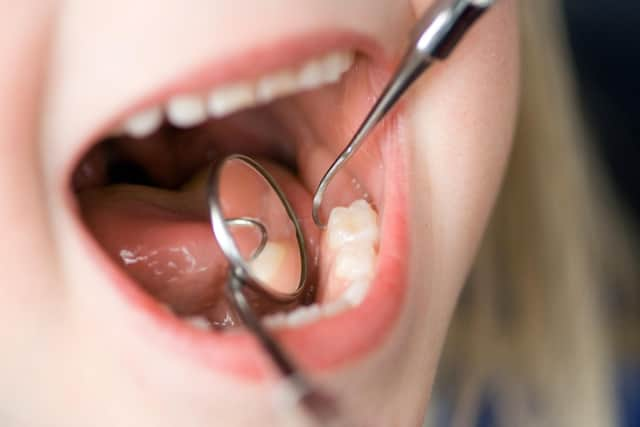More than half of five-year-olds in Peterborough could have serious dental problems, figures suggest
and live on Freeview channel 276
New figures suggest that more than half of five-year-olds in Peterborough could have enamel decay or more serious dental problems
The British Dental Association has said that the figures- from the National Dental Epidemiology Programme- show that the country's oral health gap is widening yet ministers remain "asleep at the wheel.”
Advertisement
Hide AdAdvertisement
Hide AdJust 245 of the 3,312 five-year-olds in Peterborough (7.4%) had their teeth examined in the 2021-22 school year.


The survey covered children attending mainstream, state-funded schools. All children under 18, or under 19 and in full time education, are exempt from dental charges.
Of those analysed, 56.4% had enamel decay or more serious decay to the layer of dentin under the enamel.
The figures show 29.7% of the five-year-olds examined in Peterborough had more serious dentinal decay.
Advertisement
Hide AdAdvertisement
Hide AdAcross England, over 62,600 children were included in the analysis – representing about 9.1% of the England population at age five.
Of those analysed, 29.3% had dental decay and 23.7% had more serious dentinal decay.
Across England, over 62,600 children were included in the analysis – representing about 9.1% of the England population at age five.
Of those analysed, 29.3% had dental decay and 23.7% had the more serious dentinal decay.
Advertisement
Hide AdAdvertisement
Hide AdDavid Fothergill, chairman of the Local Government Association’s community wellbeing board, said untreated dental conditions are one of the most prevalent diseases affecting children’s ability to speak, eat, play and socialise.
Mr Fothergill said: “Oral health inequality is expected to grow owing to the scale of backlogs in primary care, which limit the chance to catch problems early.”
“The Government should recommit to vital measures to combat childhood obesity and diet-related ill health, such as the sugar levy which has helped cut down the consumption of drinks with high sugar content,” he added.
A Department of Health and Social Care spokesperson said the number of children seen by NHS dentists increased by 43.6% in the last year.
Advertisement
Hide AdAdvertisement
Hide AdThey added: “We know tooth decay is often linked to deprivation and we are taking action to provide cost of living support."
They said the number of dentists increased by over 500 last year and added the government is investing more than £3 billion in NHS dentistry.